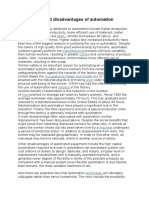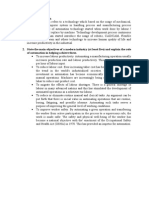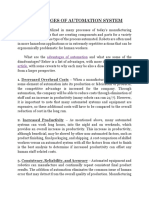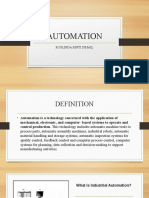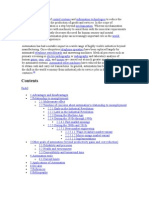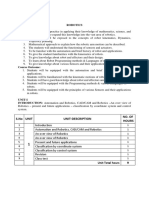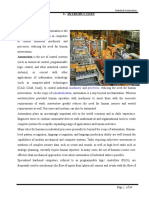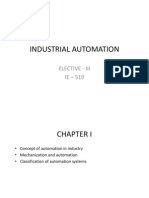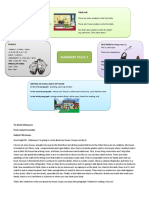0% found this document useful (0 votes)
76 views2 pagesFAS44762
The document discusses automation in manufacturing. It describes how automation has greatly improved production processes through technologies like pneumatic, hydraulic, and robotic systems controlled by programming. Automation allows for higher output quality and consistency while reducing costs. The benefits of automation include increased productivity and throughput, improved quality and predictability, and reduced labor costs. However, automation also faces disadvantages such as high initial costs, security threats, and the risk of excessive development costs.
Uploaded by
XXXXCopyright
© © All Rights Reserved
We take content rights seriously. If you suspect this is your content, claim it here.
Available Formats
Download as DOCX, PDF, TXT or read online on Scribd
0% found this document useful (0 votes)
76 views2 pagesFAS44762
The document discusses automation in manufacturing. It describes how automation has greatly improved production processes through technologies like pneumatic, hydraulic, and robotic systems controlled by programming. Automation allows for higher output quality and consistency while reducing costs. The benefits of automation include increased productivity and throughput, improved quality and predictability, and reduced labor costs. However, automation also faces disadvantages such as high initial costs, security threats, and the risk of excessive development costs.
Uploaded by
XXXXCopyright
© © All Rights Reserved
We take content rights seriously. If you suspect this is your content, claim it here.
Available Formats
Download as DOCX, PDF, TXT or read online on Scribd
/ 2










